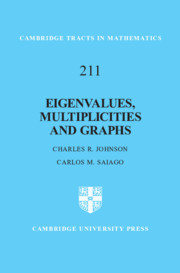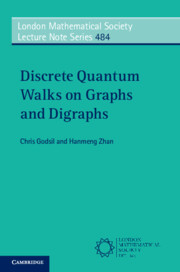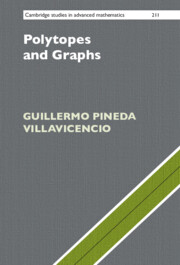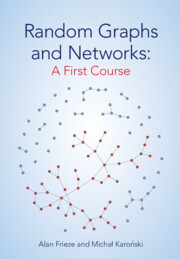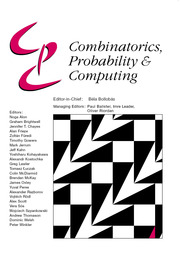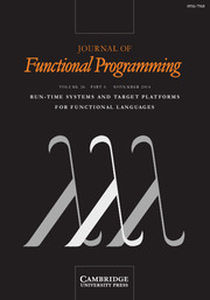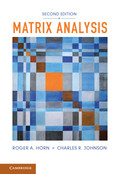Eigenvalues, Multiplicities and Graphs
The arrangement of nonzero entries of a matrix, described by the graph of the matrix, limits the possible geometric multiplicities of the eigenvalues, which are far more limited by this information than algebraic multiplicities or the numerical values of the eigenvalues. This book gives a unified development of how the graph of a symmetric matrix influences the possible multiplicities of its eigenvalues. While the theory is richest in cases where the graph is a tree, work on eigenvalues, multiplicities and graphs has provided the opportunity to identify which ideas have analogs for non-trees, and those for which trees are essential. It gathers and organizes the fundamental ideas to allow students and researchers to easily access and investigate the many interesting questions in the subject.
- Provides a unified development of theory of eigenvalues, multiplicities, and graphs
- Includes new information, including non-trees and geometric multiplicities
- Offers numerous examples to demonstrate applications of the theory
Reviews & endorsements
'The authors offer a unique and modern exploration into the eigenvalues associated with a graph, well beyond the classical treatments. This well-written and comprehensive monograph is ideal for newcomers to this subject and will be beneficial for experienced practitioners as well.' Shaun M. Fallat, University of Regina, Canada
'The undirected graph of a real symmetric matrix tells you the sparsity structure of the matrix. That seems too little information to constrain the eigenvalues. Nevertheless as the matrix gets sparser some constraints appear, not on the actual eigenvalues but on their (algebraic) multiplicities. When the graph is sparse enough to be a tree there is a lot to say. The authors have collected scattered results, filled in key omissions, imposed systematic notation and concepts so that a rich and subtle theory, blending trees and matrices, unfolds before the reader. I, for one, am grateful.' Beresford Parlett, University of California, Berkeley
'This book provides a comprehensive survey and fresh perspectives on a fundamental inverse problem: how does the structure of a matrix impact its spectral properties? The inclusion of recently developed techniques, results and open questions will foster future research and applications.' Bryan Shader, University of Wyoming.
'The authors mention in the introduction that one goal of this book is to put together in one convenient place the fundamental ideas in this area to make it easier for students and new researchers on this subject to get started on some of the problems in the field. I believe that this goal has been achieved.' Sebastian M. Cioaba, Mathematical Reviews
'In this book, the multiplicity of eigenvalues in graph theory is discussed in detail. No matter the theoretical knowledge or the way of thinking of the reader, this book has good learning and reference value. At the same time, it also plays a great role in readers' study and research. Therefore, it is a meaningful book.' Xiaogang Liu, zbMATH
Product details
No date availableAdobe eBook Reader
9781108548137
0 pages
Table of Contents
- Background
- 1. Introduction
- 2. Parter-Wiener, etc. theory
- 3. Maximum multiplicity for trees, I
- 4. Multiple eigenvalues and structure
- 5. Maximum multiplicity, II
- 6. The minimum number of distinct eigenvalues
- 7. Construction techniques
- 8. Multiplicity lists for generalized stars
- 9. Double generalized stars
- 10. Linear trees
- 11. Non-trees
- 12. Geometric multiplicities for general matrices over a field.

